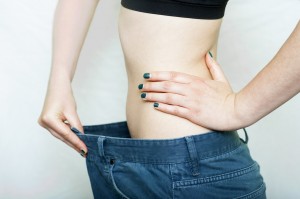Fat has had a lot of bad press and for many people, just a mention of the word can evoke misery. You can try to lose it, try to hide it, try to avoid it, but your body still needs it! Did you know that fat helps to insulate our nerve cells, keeps us warm, balances our hormones, keeps skin and arteries supple, lubricates joints and is a component in every cell?
The Truth About Fat In Foods
The key issue here is recognizing which type of fat your body needs, how much your body  requires and which type is your enemy. Armed with the right information, you can focus on getting more of the good fats and less of the bad fats into your daily diet.
requires and which type is your enemy. Armed with the right information, you can focus on getting more of the good fats and less of the bad fats into your daily diet.
There are two types of fat to be aware of. Saturated fats – let’s call them “the enemy” and unsaturated fats – “the good guys”! It is easy to tell the difference because saturated fats are hard at room temperature. Saturated fats are not essential to your health. They come from animals and are found in meat, eggs and cheese. They are harder to digest and full of cholesterol.
Unsaturated fats are liquid at room temperature and have been divided into two groups. Monounsaturated fats such as olive oil, and polyunsaturated fats such as sunflower oil. Polyunsaturated fats are split into Omega 3 fatty acids and Omega 6 fatty acids. Monounsaturated fat (Omega 9) although not essential, is not harmful in moderation – a good quality (extra virgin first cold pressed) olive oil is a healthier alternative to the usual vegetable oil. Good sources of Omega 6: safflower oil, sunflower oil, evening primrose oil, walnut oil, pumpkin oil, sesame oil. Good sources of Omega 3 are mackerel, herring, salmon, pilchards, sardines, tuna and flax seed oil. Here are some important facts about fat in our diet.
1. Fat is the ‘energy reserve’ of animals, plants and humans.
2. The ideal body-fat ratio should be approximately 19-26% of a woman’s body weight, and 12-18% of a man’s body weight.
3. There are two different types of body fat – brown and yellow. Brown fat is situated inside the body and is ‘active’, containing mitochondria that produce heat (thermogenesis) and as a result burn energy. Yellow fat is found nearer the surface, is less active and more likely to accumulate. Women tend to have a higher ratio of yellow fat than men.
4. Women need higher levels of fat because it is essential for reproduction and so the body stores it ‘just in case’.
5. An average healthy intake of good fats in the diet should be approximately 30-40 grams a day. The fat content of diets in affluent populations can be nearly four times this amount!
6. Most foods containing fat combine saturated, monounsaturated and polyunsaturated fat in varying quantities. For instance, butter’s fat content is almost 100%, of which 60% is saturated, 30% monounsaturated and 10% polyunsaturated, compared with sunflower seeds’ fat content of 73%, of which just 12% is saturated and 21% monounsaturated and 67% is polyunsaturated.
7. Heat, light and oxygen destroy essential fatty acids, which is why it is best to keep oils in dark containers.
8. Essential fats must come from the diet because your body cannot produce them. The essential healthy fats are Omega 3 and Omega 6 (known as essential fatty acids).
9. Weight for weight, fat provides more than twice the amount of usable energy than carbohydrates or protein (you’ll find 9 calories in every gram of fat).
10. Fat contributes to the palatability, texture and the smell of many foods, it also slows down the process of digestion providing an extended period of satiation after a meal.
When you know the good from the bad, fat is not as bad as you might think.






